Acrylics offer varied properties to suit significant differences in applications. Knowing the distinctions enables you to select the most suitable material for optimal performance. This article provides an in-depth comparison of common acrylic variations to inform well-informed decisions.
Plexiglass History
The foundation of acrylic glass dates back to the early 20th century. Researchers sought a synthetic alternative to fragile and heavy glass plates. The successful polymerization of methyl methacrylate led to PMMA in 1928 by Röhm and Haas, a German company.
It was later patented as Plexiglas in 1933 by chemist Otto Röhm. Over the years, companies such as ICI Acrylics and Lucite International refined their production. Improved clarity, strength, and resistance with fewer impurities further expanded its applications.
Rise to Popularity
- World War II and Military: During World War II, plexiglass held a crucial role in aircraft manufacturing. It was used in cockpit canopies, submarine periscopes, or windshields. Such applications proved longevity in extreme conditions, solidifying its reputation for reliability.
- Boom in Commerce and Industry: After the war, plexiglass gained momentum in the construction, automotive, and design industries. Its ability to withstand weather exposure, combined with ease of fabrication, made it ideal for high-performance applications.
- Medical and Protective Equipment: With advancements in medical technology, plexiglass found its way into medical devices, protective barriers, and optical lenses. Hospitals and laboratories widely adopted acrylic plexiglass due to its hygienic and easy-to-clean surface.
- Sustainability and Modern Innovations: Manufacturers are now focusing on recyclable and sustainable PMMA to reduce their environmental impact. Innovations like UV-resistant coatings, scratch-proof acrylics, and eco-friendly alternatives continue to enhance the performance.
Basic Plexiglass Properties
A. Transparency and Optical Clarity
Plexiglass allows up to 92% of light transmission, providing crystal-clear visibility and optimal performance. It becomes suitable for unobstructed views through display cases, aquariums, and windows. Unlike some plastics, high-quality plexiglass barely turns yellow over time.
Some variations of clear acrylic sheets have anti-reflective coatings or UV-filtering properties. It further enhances optical performance for applications like sunglasses, protective shields, and high-end displays.
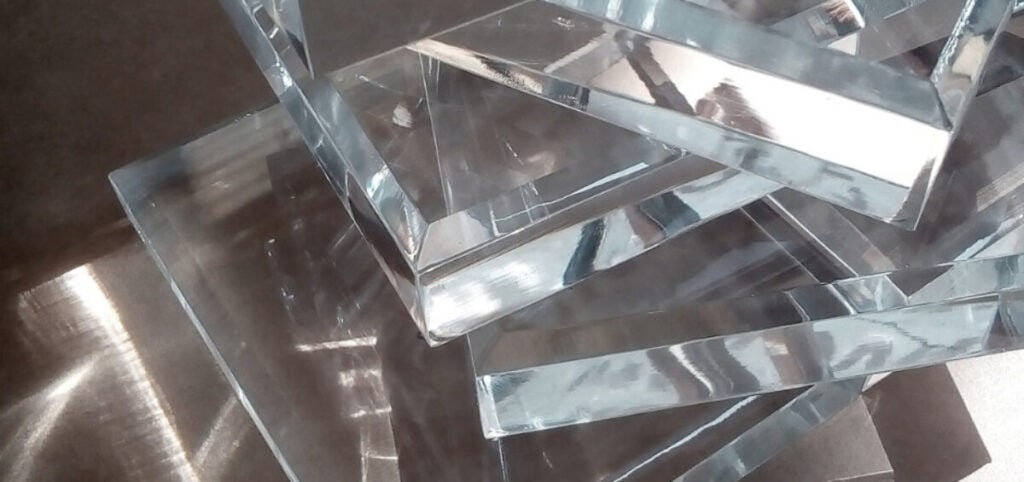
B. Strength and Lightweight Nature
Plexiglass is significantly stronger than standard glass, with up to 17 times the impact resistance. Its shatter resistant nature can withstand forceful impacts. That’s why it’s a preferred choice for security glazing, safety shields, and industrial barriers.
Plexiglass weighs almost 50% less than glass, enabling easy handling, transportation, and installation. Its lightweight nature also contributes to fuel efficiency in automotive and aerospace applications.
C. Scratch Resistance and UV Resistance
Standard acrylic is less scratch-resistant than glass; however, manufacturers offer scratch-resistant coatings. It enhances surface durability for applications that require frequent cleaning. Naturally, UV-resistant plexiglass prevents degradation and discoloration.
This quality suits outdoor applications, such as skylights and protective shields, to endure intense sunlight. Some premium acrylic sheets are engineered with additional UV stabilizers to provide an extended lifespan and enhanced strength.
D. Durability Compared to Traditional Glass
Traditional glass is prone to breakage upon sudden impact. Meanwhile, plexiglass maintains high impact tolerance, making it safer for barriers, vehicles, and enclosures. Plexiglass can withstand environmental adversities, including cold, heat, humidity, and exposure to chemicals.
Thanks to weatherproof properties, plexiglass can maintain its clarity, strength, and flexibility for years. It also reduces maintenance needs and replacement costs compared to some fragile glass installations.
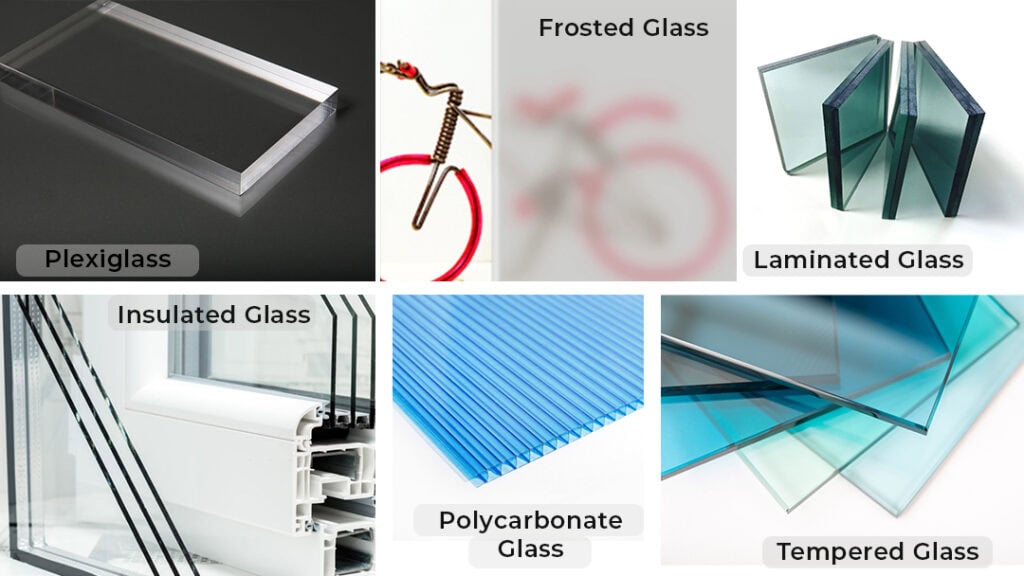
Types of Acrylic Materials
When it comes to acrylic types, there are too many to cover. Cast, extruded, colored, frosted, UV-stable, sanitary – just to name a few. Then, there are multiple specialized versions to serve distinct purposes.
01. Cell Cast Acrylic
It’s made through a batch process. Liquid methyl methacrylate (MMA) is poured into molds and polymerized between glass sheets. Slow curing produces high-quality sheets with consistent properties.
- Superior Optical Clarity – Exceptional transparency and clarity seem ideal for high-end displays and lenses.
- High Durability and Impact Resistance – Denser molecular structure withstands external stress for higher impact resistance.
- Smooth and Polished Surface – The manufacturing process produces a flawless surface for enhanced aesthetics.
- Chemical Resistance – Resistance to chemical exposure suits industrial uses involving cleaning agents or harsh solvents.
- Machining and Laser Cutting – Manufacturers can precisely cut, engrave, and shape without melting or warping for accuracy.
02. Extruded Acrylic
It’s produced using a continuous process. Acrylic resin is pushed through a mold and formed into sheets. The high-speed method yields cost-effective sheets, albeit with some trade-offs in material consistency.
- More Affordable – Cheaper manufacturing costs make it a great choice for on-budget projects without compromising premium quality.
- Consistency in Thickness – The extrusion process ensures uniform thickness, which is beneficial for precision-cut applications.
- Easy to Machine and Shape – Extruded acrylic is more flexible, allowing bending and thermoforming in mass production.
- Sufficient Transparency – Extruded acrylic offers excellent clarity, but internal stresses can cause surface imperfections.
- Ideal for Large-Scale Uses – Due to its cost efficiency and versatility, extruded acrylic is well-suited for signs, barriers, and glazing.
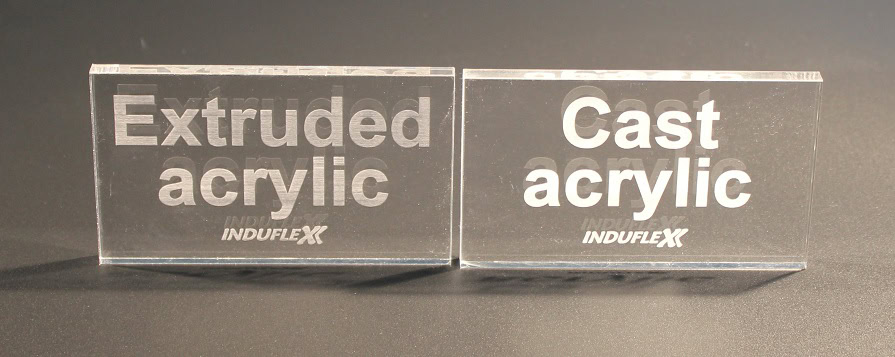
03. Impact-Modified Acrylic
It’s a high-performance variation of standard acrylic to withstand greater stress, impact, and elements. An enhanced molecular structure allows brand manufacturers to achieve a variety of superior durability.
The acrylic is created by introducing elastomeric compounds (rubber-like materials) into polymethyl methacrylate (PMMA) formulation. The difference in modifications allows absorption of impact. It makes the acrylic a more resilient alternative to standard acrylic and plastics.
- Superior Impact Resistance – This version offers up to 10x the strength of conventional acrylics for protective uses.
- Lightweight Alternative to Glass – Impact-modified acrylic is significantly lighter, facilitating easy transport and installation.
- Weather and UV Resistance – The material resists yellowing and degradation to suit safety shields and vehicle windows.
- Retains Optical Clarity – Modified acrylic maintains excellent light transmission, providing clear visibility in certain applications.
- Safer Breakage Patterns – Severe impact can bend or deform it without shattering it into dangerous shards, thereby reducing injury risks.
Common Applications
- Automotive and Transportation: windshields, side windows, headlight-taillight covers, and aerospace cockpit shields.
- Safety and Industrial Protection: safety shields, sneeze guards, machine protectors, equipment covers, and bulletproof windows.
- Outdoor and Recreational Use: hockey rink shielding, spectator barriers, aquariums, water tanks, and advertising panels.
04. UV-Resistant Acrylic
It’s a specialized acrylic to withstand prolonged exposure to sunlight without yellowing or degradation. Standard acrylic is naturally resistant to UV radiation to some extent. UV-resistant acrylic incorporates stabilizers and advanced polymer technology to enhance its weather resistance.
What Makes Acrylic UV-Resistant?
- UV Stabilizers and Additive Technology: Manufacturers add stabilizers into the PMMA formula during production. These stabilizers block harmful UV rays, reduce yellowing and fading, and improve the lifespan.
- Weatherproof Characteristics: UV-resistant acrylic can withstand extreme heat without softening or warping. It retains its integrity against high humidity, water absorption, mold growth, and chemical resistance.
Applications of UV-Resistant Acrylic
- Outdoor Signage: storefront business signs, illuminated LED/backlit displays, billboards, and directional signage.
- Marine Applications: boat windows and windshields, aquariums, underwater displays, control panel covers.
05. Colored Acrylic
Colored acrylic sheets are basically created by adding dyes or pigments into polymethyl methacrylate (PMMA) resin. This results in a uniform color distribution with the standard benefits of acrylic.
- Many Colors and Finishes – It’s available in solid, transparent, translucent, and fluorescent options. Colored acrylic provides customization for decorative and branding needs.
- High Visibility for Signage and Displays – Vibrant colors ensure strong visual appeal. It makes colored acrylic perfect for advertising boards, illuminated signs, and retail displays.
- UV and Weather Resistant – Colored acrylic retains brightness and structural integrity. Even prolonged sun exposure or harsh environmental conditions can’t distort the usability.
- Customizable for Artistic Installations – Artists and designers use colored acrylic for sculptures, wall panels, and interactive installations to push the overall aesthetic appeal.
Common Applications
- Advertising and Branding – Storefront signage, menu boards, corporate branding elements.
- Artistic and Decorative Installations – Interior designs, gallery displays, creative sculptures.
- Retail Fixtures and Display Cases – POP displays, window presentations, promotional stands.
- Backlit Panels and LED Light Diffusers – Illuminated signs and architectural lighting solutions.

06. Frosted Acrylic
Frosted acrylic sheets undergo a surface treatment process (chemical etching or sandblasting). The process diffuses light to reduce glare while maintaining semi-transparency. It results in a soft, matte finish for applications requiring privacy and aesthetics.
- Sophisticated Matte Surface – An elegant and well-diffused appearance seems ideal for premium interior designs.
- Light Diffusion for Soft Glow Effects – Frosted acrylic spreads light evenly to create aesthetic solutions for signs and panels.
- Privacy with Light Transmission – Office partitions, decorative screens, and bathroom enclosures have semi-transparency.
- Scratch and Fingerprint Resistance – The textured surface reduces smudges, allowing for a clean installation and a refined finish.
Common Applications
- Light Diffusing Panels – LED-lit signage as well as decorative and/or architectural panels.
- Privacy Screens and Office Partitions – Modern workspaces, decorative glass replacements.
- Interior Decor and Luxury Designs – Store interiors, exhibitions, high-end branding elements.
- Elegant Retail Display Cases – Premium product showcases, museum exhibits, luxury branding.
Perspex and acrylic are two distinct materials generally used interchangeably by common people. However, the specified term holds particular importance in terms of manufacturing and fabrication.
Limitations of Plexy Glass Acrylic Sheet
Although there are many great advantages of using plexiglass, it’s not without drawbacks. Clients, brands, and manufacturers have to switch from one type to another. Even choosing polycarbonate or PVC becomes more reasonable.
a. Susceptibility to Scratches: Unlike glass, plexiglass is more prone to scratches and requires special coatings or careful handling to maintain clarity.
Example: Automotive headlamp covers made of Plexiglass can become dull or scratched from road debris and weather exposure, requiring protective films or routine polishing to preserve clarity.
b. Lower Heat Resistance Compared to Glass: Plexiglass has a lower melting point than glass, making it susceptible to warping or deformation at high temperatures.
Example: In industrial settings, plexiglass barriers exposed to high heat or direct sunlight may slightly warp, requiring reinforcement with heat-resistant materials in extreme environments.
c. Brittle Under Extreme Impact: While plexiglass is stronger than glass, it is not as impact-resistant as polycarbonate and can fracture under excessive force.
Example: In high-risk areas, security glazing prefers polycarbonate over plexiglass, as polycarbonate absorbs impact better and is commonly used in bullet-resistant applications.
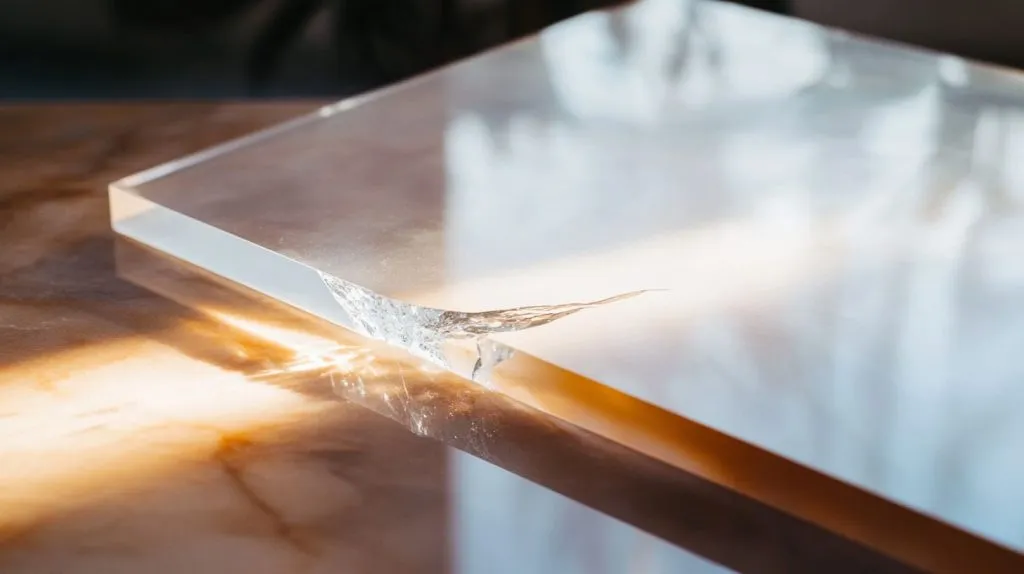
d. Susceptibility to UV Damage Without Proper Coatings: Standard Plexiglass can turn yellow over time if UV stabilizers are not added during manufacturing.
Example: Outdoor skylights made from regular plexiglass may experience discoloration and reduced light transmission. Manufacturers prefer UV-stabilized acrylic for long-term outdoor exposure.
e. Limited Chemical Resistance: Plexiglass is vulnerable to certain harsh solvents, including acetone and alcohol-based cleaners, which can cause surface damage or cracking.
Example: Laboratories that handle chemical storage often opt for polycarbonate enclosures instead of Plexiglass, as Plexiglass can weaken or craze upon repeated exposure to certain solvents.
f. Higher Cost Compared to Some Alternatives: Plexiglass is more expensive than glass or lower-cost plastic sheets, such as polystyrene, which may be preferable for budget-sensitive projects.
Example: Mass-produced plastic packaging opts for cheaper alternatives like polystyrene or PET instead of Plexiglass, as the cost of PMMA is significantly higher for disposable applications.
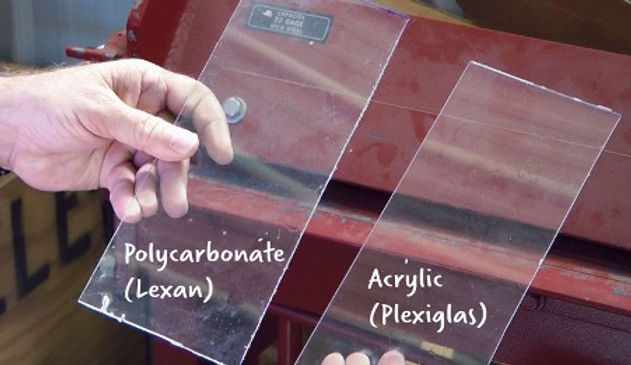
g. Environmental Concerns and Recycling Challenges: While recyclable, plexiglass requires specialized facilities for processing. Improper disposal contributes to waste accumulation.
Example: Certain companies use recycled acrylic sheets to minimize their environmental impact, but the widespread recycling of Plexiglass remains limited compared to other plastics, such as PET or HDPE.
How to Choose the Right Acrylic for Your Project
Selecting the correct acrylic material for a project requires durability, clarity, flexibility, and resistance. Acrylic sheets come in various types, finishes, and thicknesses, each suited for specific applications.
1) Understanding Acrylic Types
- Cast acrylic is renowned for its superior optical clarity, exceptional scratch resistance, and enhanced machinability. It’s ideal for projects requiring laser cutting and engraving. High-end museum display cases use cast acrylic for its excellent transparency and resistance to crazing when engraved.
- Extruded acrylic is cost-effective, but it has slightly lower optical clarity and is more prone to stress cracking than cast acrylic. It’s the best choice for mass-production applications. Large-scale advertising signboards are often made from extruded acrylic due to its affordability and easy fabrication.
- Impact-modified acrylic is designed for high durability and shock resistance. It’s highly recommended for projects requiring extra strength. Hockey rink protective barriers use impact-modified acrylic since it can withstand high-velocity impacts without shattering.
- UV-resistant acrylic prevents yellowing and degradation from sunlight exposure. That’s why it’s ideal for prolonged (long-term) outdoor applications. Storefront signage in hot climates benefits from UV-resistant acrylic, ensuring long-lasting brightness and clarity.
- Colored and frosted acrylic enhances aesthetics for decorative, artistic, and branding applications. Interior designers use frosted acrylic partitions for modern office spaces to balance privacy with ambient light diffusion.
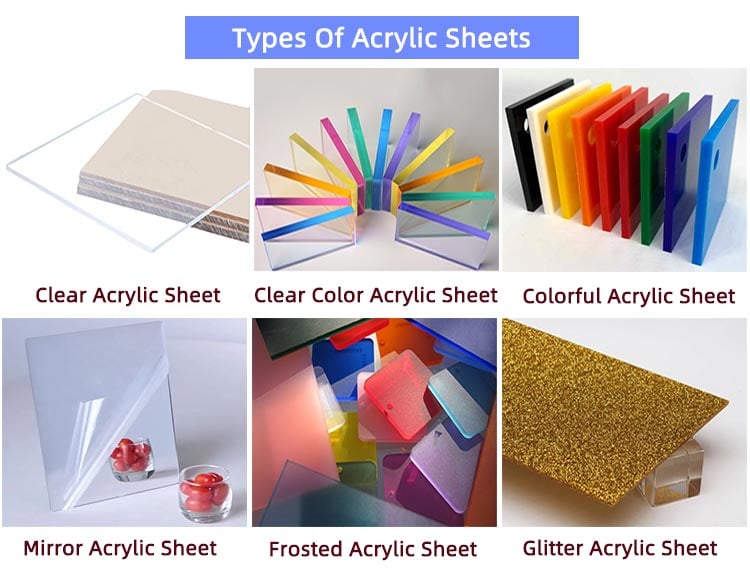
2) Features to Consider When Choosing Acrylic
- Clarity and Optical Performance: If your project involves display cases, lenses, or protective screens, cast acrylic is the best choice due to its exceptional light transmission and low distortion.
Camera lenses and optical devices utilize high-grade cast acrylic due to its superior transparency and ability to maintain precise light refraction.
- Strength and Impact Resistance: Impact-modified acrylic is recommended for projects requiring protection from physical force (sports enclosures, automotive windshields, and industrial barriers).
Bulletproof installations in banks and security booths typically use impact-resistant acrylic sheets, which prevent breakage during high-impact scenarios.
- Flexibility and Workability: For applications requiring bending, thermoforming, or custom shapes, extruded acrylic is easier to machine than cast acrylic.
Retail displays with curved features often use extruded acrylic, allowing designers to create sleek shapes and flowing contours.
- Weather and UV Resistance: Outdoor applications require UV-resistant acrylic to prevent yellowing and structural weakening caused by sun exposure.
Aquarium viewing panels use UV-resistant acrylic to withstand sunlight and water pressure, ensuring long-term clarity for marine life exhibits.
- Thickness and Durability: Opt for thicker acrylic sheets in high-stress environments, such as protective enclosures or load-bearing structures.
Aquarium tanks holding large marine animals use thick acrylic panels to withstand water pressure without cracking.
- Aesthetics and Design Flexibility: Frosted or colored acrylic enhances visual appeal in branding, signage, or decorative installations.
Luxury perfume stores use colored acrylic shelving to create eye-catching product displays with high-end aesthetics.
3) Choosing the Right Acrylic for Specific Industries
- For Retail and Branding – Colored acrylic and extruded acrylic are ideal for advertising panels, display racks, and promotional signage.
- For Architecture and Interior Design: Frosted acrylic, cast acrylic, and UV-resistant acrylic are suitable for privacy screens, skylights, and decorative installations.
- For Automotive and Aerospace – Impact-resistant acrylic is used in race car windshields, cockpit windows, and headlamp covers.
- For Healthcare and Safety Barriers – A hygienic acrylic sheet offers protection against airborne particles in medical environments.
- For Marine and Outdoor Use – UV-resistant acrylic is essential for boats, aquariums, and public signage exposed to sunlight and moisture.
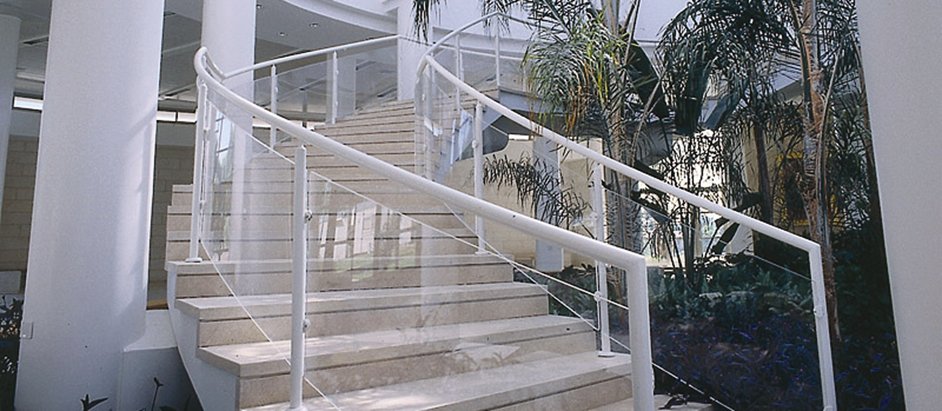
Conclusion
There are many benefits of plexiglass acrylic when designed, manufactured, and implemented correctly. Don’t let plexy glass, a misspelled variation of the generic term, confuse you with plexiglass, acrylic, and Perspex. It certainly takes some time to determine the best possible option from many alternatives.
Get the Best Quality Plexiglass from JUMEI
Are you seeking the ultimate acrylic or plexiglass option for your projects? Jumei Acrylic Manufacturing specializes in fabricating custom pieces of the highest quality. We own the best experts, innovation, and machinery. Contact us to learn how our services can help you with your project.
]]>The article enables a comprehensive understanding of plexiglass sheets. It explores the features and differentiators from other materials (organic glass and alternatives). You’ll gain valuable insights into the benefits while identifying the ideal plexiglass sheet for your specifications.
What is Plexiglass?
The scientific name is polymethyl methacrylate (PMMA) for the transparent plastic. Plexiglass has comparable transparency to traditional glass. However, the plastic material is significantly light and durable enough to become a worthy substitute.
Over time, plexiglass has become directly synonymous with acrylic. It’s like Kleenex for tissues or Band-Aid for adhesive bandages. Such a mis-concepted interchange highlights its widespread adoption.
The term ‘Plexiglass’ is a prominent brand name. It’s more of a generalized term for PMMA. Some other synonymous brand names include Acrylite, Lucite, and Perspex. Those names represent similar acrylic sheets that feature identical attributes.
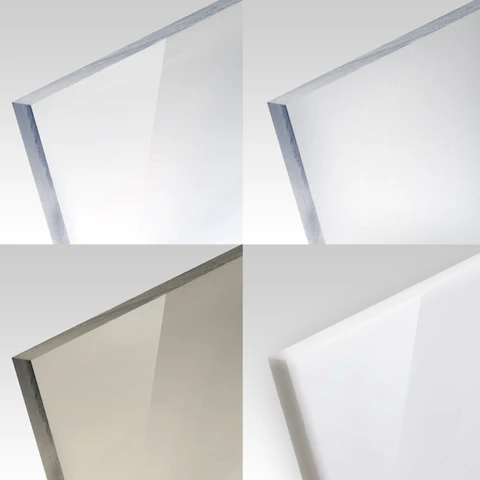
Chemically, plexiglass is a synthetic polymer derived from methyl methacrylate (MMA). MMA is the monomer that undergoes polymerization. Polymerized MMA eventually creates pure PMMA.
Its molecular structure has long chains of carbon atoms bonded to methyl and ester groups, combining rigidity and flexibility. Unlike glass, plexiglass doesn’t splinter on impact. Instead, it may crack in a controlled manner to reduce injury risks.
History and Development of the Shatter Resistant Alternative
German chemist Dr. Otto Röhm invented PMMA plexiglass back in 1933. Röhm, with his business partner Otto Haas, founded the Röhm and Haas company in 1907. Röhm launched the successfully synthesized PMMA under the brand name ‘Plexiglas.’
The original term was later anglicized to ‘Plexiglass.’ It marked a significant milestone in metallurgic science, especially in innovative plastics. A timeline of plexiglass adoption in typical applications –
- 1930s: Plexiglass gained initial recognition for its optical clarity and durability. Aircraft canopies and submarine periscopes utilized the material during World War II.
- 1940s – 1950s: Post-war, Plexiglass found applications in many industries. It became popular for illuminated signage, architectural designs, and household items.
- 1960s – 1970s: The usability expanded further with uses in automotive, greenhouse, and furniture. Its resistance to UV radiation made it ideal for outdoor applications.
- 1980s – Present: Continued evolution has made it to modern sectors (LED, medical, and renewable energy). Its recyclability, and environmental resistance gained momentum.
Ongoing research and development efforts emphasize the enhancement of plexiglass properties. Modern, advanced applications present more complexity, and improvements are being made to meet the demands.
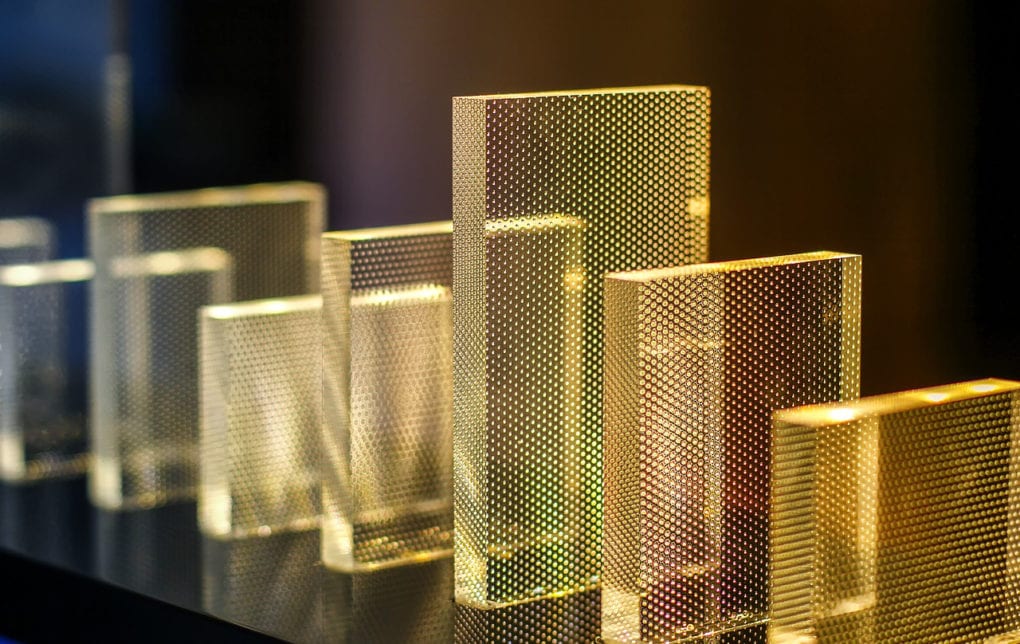
Properties of Plexiglass Acrylic Sheets
a. Physical Properties
- Density: The density of 1.18 g/cm³ is approximately half the weight of glass. The lightweight material enables easy handling for many PMMA products.
- Water Absorption: The water absorption rate is 0.3% over 24 hours. It makes plexiglass highly resistant to moisture, ensuring durability in humid conditions.
- Optical Clarity: Plexiglass initiates 92% light transmittance, outmatching most other plastics and some glasses. It’s a highly suitable option for numerous uses.
b. Mechanical Properties
- Tensile Strength: The value ranges from 8,000 to 11,000 psi. Such tensile strength withstands significant stress without breaking.
- Impact Resistance: Plexiglass is 17x more impact-resistant than regular glass. It’s also a safer alternative to glass regarding impact and breakage.
- Flexural Strength: The flexural strength is 12,000 to 17,000 psi. Plexiglass can maintain its shape under bending in curved designs.
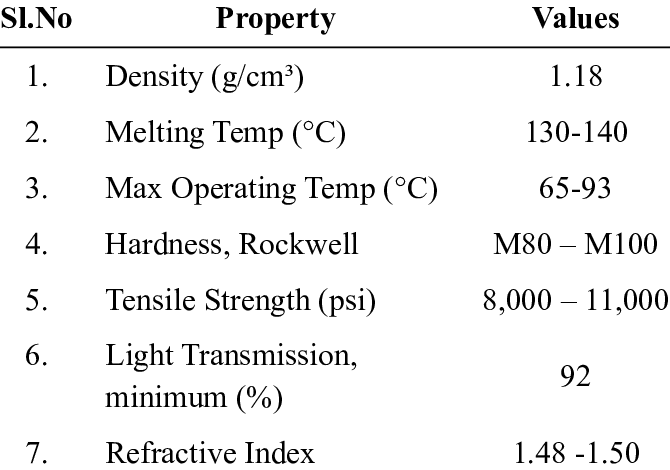
Thermal/Electrical Properties
- Coefficient of Thermal Expansion: Plexiglass expands at a rate of 5-9 x 10⁻⁵ in/in/°F. It’s manageable in most applications requiring dimensional stability.
- Heat Deflection Temperature: It can withstand higher temperature (up to 210°F or 100°C) under stress. That’s why it suits applications involving moderate heat exposure.
- Dielectric Strength: Plexiglass features a dielectric strength of 400 V/mil. Thus, PMMA is an effective insulator in electrical applications (electronics).
Plexiglass Types: Extruded vs Cast
Engineers broadly divide manufactured plexiglass into two particular categories – cast and extruded. Cast plexiglass acrylic comes from casting, whereas extruded acrylic plexiglass derives from extrusion.
i. Manufacturing Process
Cast Plexiglass Sheets: Pouring liquid methyl methacrylate (MMA) monomer into a mold initiates polymerization. The process initiates higher molecular weight and durability for the sheet form.
Extruded Plexiglass Sheets: Continuous pushing of semi-molten acrylic through rollers forms plastic sheets. It’s a more cost-effective method to allow mass production at standard specifications.
ii. Applications
Cast Plexiglass: Laser cutting, engraving, and CNC machining due to higher molecular weight and thermal stability. Common applications include aquariums, high-end signage, and optical lenses.
Extruded Plexiglass: It’s suitable for mass-produced display cases, acrylic windows, and protective barriers. Simple fabrication projects benefit from relatively low cost and constant thickness.
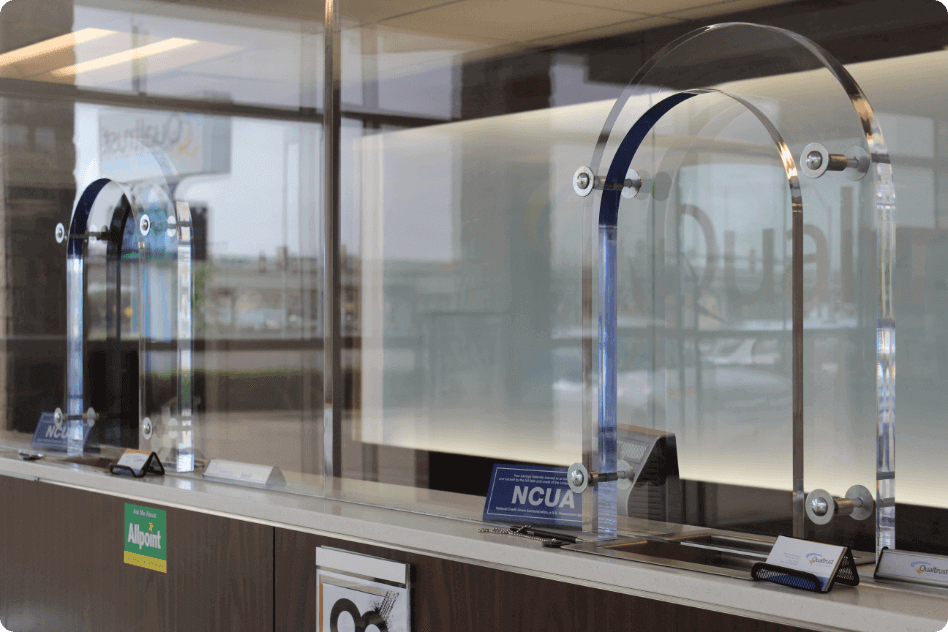
iii. Practical Considerations
Extruded sheets are about 20% – 30% cheaper than cast sheets. It often makes extrusion a better choice for projects with tight budgets. However, cast sheets spare more space for specialized applications’ thicknesses, colors, and finishes.
Extruded sheets are more prone to internal stresses. It can lead to warping or cracking under high temps or loads. Cast sheets are often paper-made for protection during handling. However, extruded sheets are mostly film-masked in most cases.
Key Differences in Acrylic Glass (Plexiglass) Properties
| Property | Cast Plexiglass Sheets | Extruded Plexiglass Sheets |
|---|---|---|
| Molecular Weight | Higher (results in better strength and durability) | Lower (somewhat less durable for high-stress applications) |
| Surface Finish | Superior optical clarity and smoothness | Slightly less clear but smooth surfaces |
| Thermal Stability | Better resistance to heat and deformation | Lower resistance to heat |
| Cost | More expensive due to higher quality | More affordable for budget-sensitive projects |
Other Types of Plexiglass Sheets
- Clear Plexiglass Sheets: The most widely used type holds exceptional optical clarity. About 92% light transmittance makes them ideal for windows, skylights, and display cases. Such sheets are available in various thicknesses, ranging from 1/25″ to 4 inches.
- Colored Plexiglass Sheets: They come in a wide range of hues, such as fluorescent and opaque. Such sheets are often used in decorative applications, signage, and artistic projects. There are over 20 color options to combine aesthetics with durability.
- White Plexiglass Sheets: Such sheets are commonly used for applications requiring opacity, like light-sensitive signage and advertisements. Some advanced variants can transition from black to white under LED lighting, making them ideal for dynamic displays.
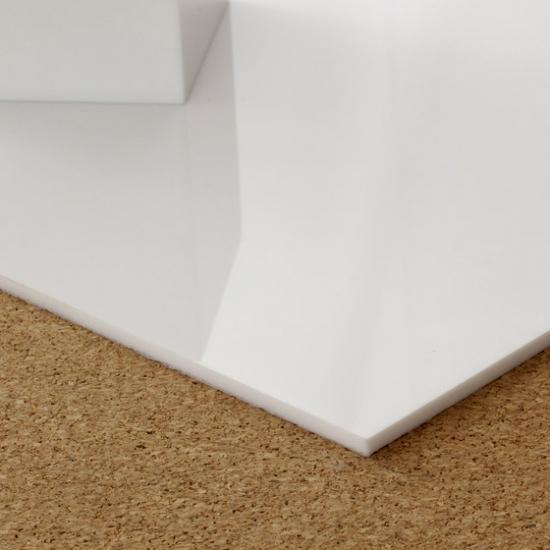
- Mirrored Plexiglass Sheets: They offer the reflective properties of traditional mirrors while maintaining plexiglass’s durability and lightweight nature. Such sheets are often used in high-stress environments like gyms, dance studios, and retail displays.
- Abrasion-Resistant Plexiglass Sheets: A reinforced coating prevents scratches and chemical exposure. Public partitions, outdoor constructions, and display cases can benefit from their enhanced durability for long-term performance.
- Anti-Static Plexiglass Sheets: These sheets prevent electrostatic discharge for sensitive electronic equipment applications. Such plexiglass has exclusive application in conveyor line covers, glove boxes, and control shields.
- Light-Diffusing Plexiglass Sheets: Such sheets are engineered to prevent visible hot spots and luminance fluctuations. That’s why it’s found on backlit signs and illuminated letters. These sheets reduce the need for multiple lighting sources to save energy and costs.
- UV-Filtering Plexiglass Sheets: They block harmful ultraviolet rays to protect artwork, photographs, and sensitive items. No fading and degradation can take place easily. These sheets have widespread uses in museums, galleries, and simple framing.
- Impact-Modified Plexiglass Sheets: Such sheets offer enhanced impact resistance in high-risk uses like protective barriers and industrial equipment. The 17x impact resistance of glass becomes quite helpful in ensuring optimal safety and enduring reliability.
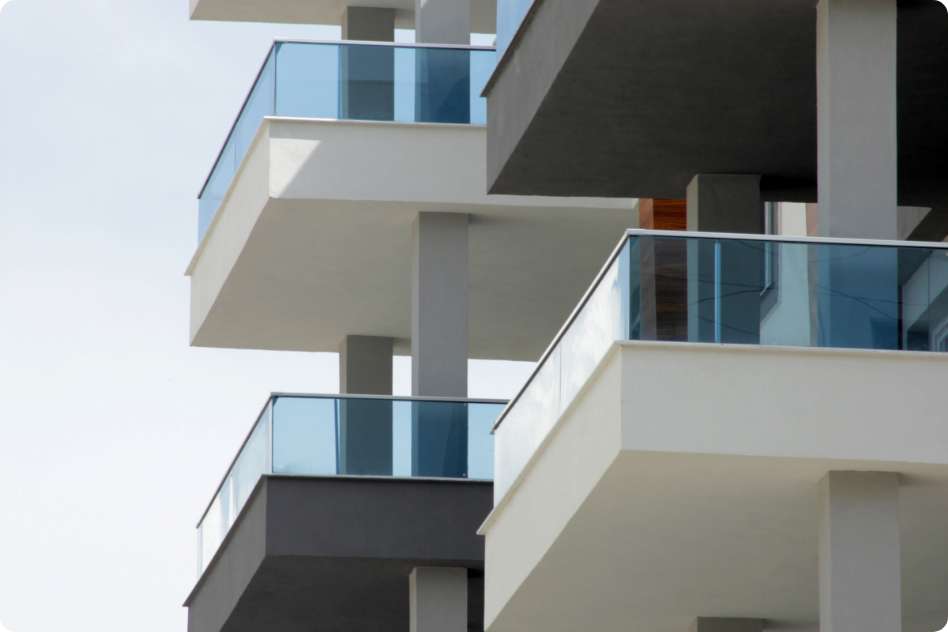
Plexiglass Sheet Features
- Strength-to-Weight: An exceptional strength-to-weight ratio prevails for plexiglass. The plastic is 50% lighter than glass, yet it’s 17x stronger against impact. The ideal material suits applications requiring longevity and easy handling.
- Long-Term Durability: Plexiglass can withstand prolonged exposure to environmental factors without significant degradation. It can effectively resist yellowing to retain its original clarity for up to 30 years. Such durability suits signs and greenhouses well.
- Light Transmission: The 92% light transmission allows plexiglass to surpass most plastics and several glass variants. Its clarity is perfect for display cases, optical lenses, and windows. Aquariums/museums benefit from visibility and protection.
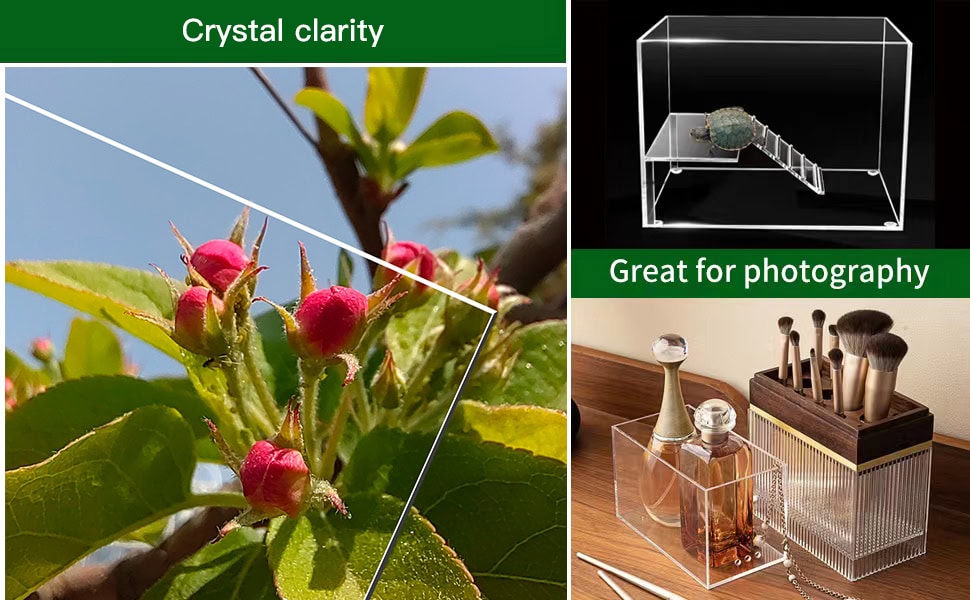
- Overall Workability: Plexiglass is easy to mold, cut, drill, and shape in a standard fabrication process. Its built-in thermoformability accommodates complex shapes. Such workability is particularly advantageous in custom panels, signage, and components.
- Weather Resistance: Plexiglass withstands extreme weather conditions, including UV, rain, and temp fluctuations. Its resistance to cracking and fading makes the plastic a reliable choice for bus shelters, skylights, and outdoor furniture.
- Chemical Resistance: Plexiglass can also resist chemicals like dilute acids, alkalis, and oils. However, it’s vulnerable to solvents like acetone and benzene. This chemical resistance is why plexiglass is employed for lab equipment and protective shields.
- Scratch Resistance: Plexiglass resistance to scratch lies within the spectrum. Some alternatives are more resistant (glass), whereas some are outmatched by plexiglass (polycarbonate). Anti-abrasion coating can help retail displays and partitions.
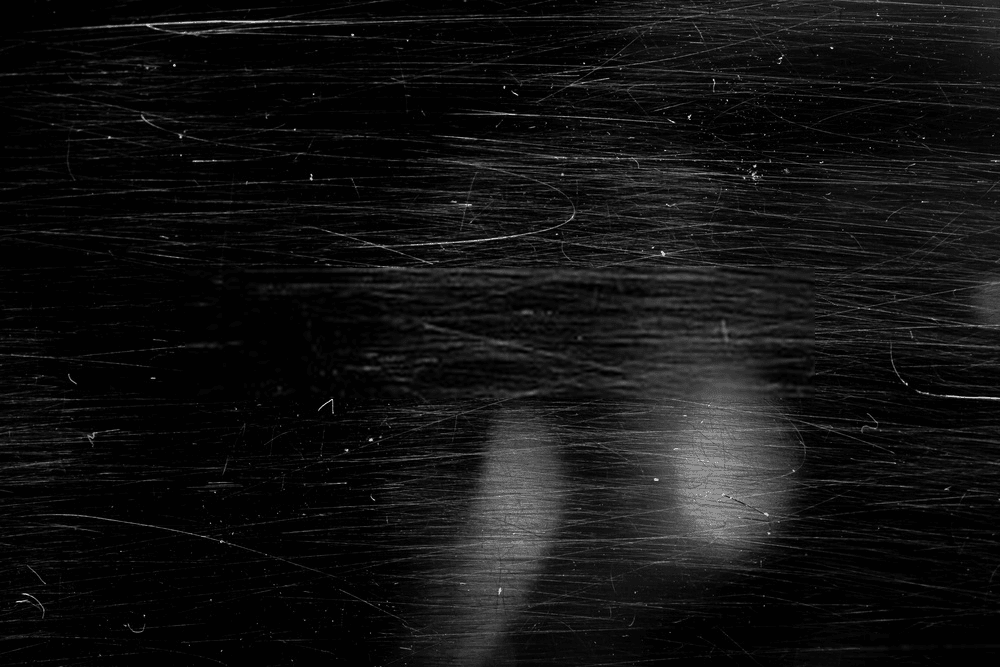
- Sustainability: Recyclable plexiglass produces less greenhouse gases. Its environmental profile continues to improve as scrapes are used to generate other items. Its prolonged lifespan reduces the necessity for frequent replacements for sustainability.
- Maintenance Needs: Minimal maintenance is enough for the plastic. Cleaning with a soft cloth and mild soap is enough for clarity and appeal. Such low maintenance presents a practical solution for residential and commercial uses.
- Cost (Initial and Overall): The initial investment is higher than alternatives like standard glass or PETG. However, its durability and maintenance initiate cost efficiency in the long run. Outdoor signage can last decades without any replacements.
- Safety Considerations: Shatter resistance of plexiglass doesn’t let it break into sharp shards like glass. Instead, it breaks into large-sized blunt pieces to reduce injury risks. It benefits protective shields, aircraft windows, headlight covers, and playground tools.

Acrylic Sheeting (Plexiglass) Applications
a. Advertising: Plexiglass has been a go-to material for advertising displays due to its clarity and longevity. Its lightweight nature and customizability are ideal for creating eye-catching promotional materials.
Some examples are backlit advertising panels, illuminated billboards, and point-of-sale displays.
b. Signage: Plexiglass holds equal popularity for indoor and outdoor signage, lasting up to 30 years. Its weather resistance and UV stability ensure long-lasting performance in harsh conditions.
Some leading examples are storefront signs, directional signage, and illuminated advertising.

c. Display: Retailers and exhibitors favor plexiglass for transparency and durability. Such material properties allow the plastic products to be showcased while ensuring reasonable protection.
Some real-time examples include museum display cases, retail shelving, and trade show exhibits.
d. Wall Partition: Plexiglass partitions are increasingly popular in offices, schools, and public spaces. Such a sector harnesses the material’s ability to provide separation without obstructing visibility.
Common examples include office cubicle dividers, protective barriers, and classroom partitions.
e. Decoration: The versatile material grants applicability in interior design with modern and sleek aesthetics. Colored and frosted sheets are available in 20+ hues to help with creative designs.
Some noteworthy examples are wall art, custom furniture accents, decorative arts, and solar panels.

f. Architecture: Architectural designs implement plexiglass for lightweight and durable properties. The superior strength-to-weight ratio makes it suitable for innovative and functional designs.
Some standard examples are skylights, atriums, structural glazing, and aerospace components.
g. Construction: Plexiglass is highly valued for its superior impact resistance and weatherproofing capabilities. It can withstand extreme weather conditions, including UV radiation and heavy rain.
Real-world examples are greenhouse glazing, noise barriers, and roofing panels.
h. Automotive: Acrylic plexiglass is thrivingly adopted in the automotive industry. Its lightweight nature, complex detailing, and aerodynamic properties can benefit multiple vehicle parts.
Some leading examples are windshields, sunroofs, window panels, and headlight covers.
i. Lighting: Plexiglass enhances lighting applications by diffusing light evenly with optimal clarity. Those light-diffusing sheets can reduce visible hot spots to create uniform illumination.
Some commercial examples are light diffusers, LED covers, and decorative lighting fixtures.

j. Furniture: Modern furniture designers increasingly employ plexiglass for its aesthetics and functionality. Those accents are lightweight yet sturdy, making it easy to move and maintain.
Some popular examples are coffee tables, chairs, dining tables, and shelving units.
k. Medical: In the medical field, plexiglass delivers hygienic properties and easy sterilization. Plastic material is commonly used in hospitals to prevent cross-contamination.
Some examples are protective shields, medical device covers, and laboratory equipment.
Plexiglass Sheets vs Alternative Materials
Polycarbonate, glass, and polyethylene terephthalate glycol (PETG) are the topmost substitutes for acrylic plexiglass. These alternatives also offer unique features that better suit some specific uses.
01. Polycarbonate Sheets: They exhibit comparable optical clarity (88% – 90% light transmission). But the extremely high impact resistance (250x than glass) is accompanied by superior thermal resistance.
It’s somewhat prone to scratches without protective coatings. Bulletproof glass, machine guards, and automotive components utilize the plastic. Greenhouse glazing can also benefit from polycarbonate.
02. Glass: Superior scratch resistance, structural hardness, and chemical stability define the material. It holds the standard for optical clarity (92% or more light transmission). But the heavyweight composite is incredibly brittle.
Glass panels usually generate many sharp shards upon accidental breaking or shattering. And they often present serious risks of cut injury. Still, there are windows, mirrors, decorative items, and others everywhere.
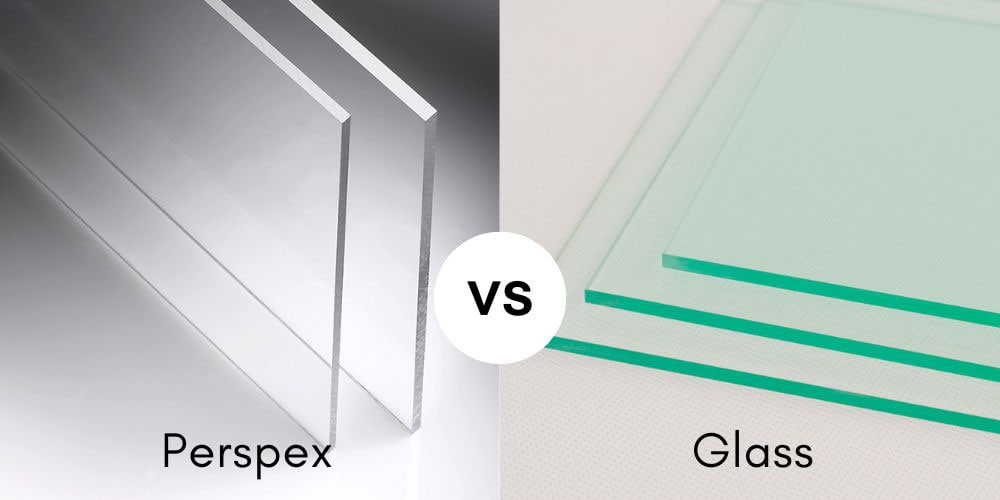
03. PETG Sheets: They hold satisfying optical clarity (86% – 90% light transmission). Its flexibility comes from easy thermoformability. Lower impact resistance than plexiglass and polycarbonate prevails here.
Packaging, point-of-sale displays, and medical devices cover the notable applications. PETG is compliant with the FDA, making it to food packaging. It’s also ideal for custom displays due to easy fabrication.
| Material | Features | Applications |
|---|---|---|
| Plexiglass | Lightweight, durable, UV-resistant | Windows, aquariums, signage, DIY projects |
| Polycarbonate | Extremely impact resistance and thermal stability | Bulletproof glass, machine guards |
| Traditional Glass | Scratch resistance with high optical clarity | Windows, mirrors, decorative panels |
| PETG Sheets | Flexible and easy to thermoform | Packaging, displays, medical devices |
Plexiglass vs Acrylic vs Perspex: Are They the Same?
‘Acrylic,’ ‘Plexiglass,’ and ‘Perspex’ are often used interchangeably. This leads to confusion about whether they refer to the same material or distinct products.
Plexiglass (Brand Name): It’s the trademarked brand name for acrylic sheets. And the term was coined by the first marketer back in 1933. Plexiglass is synonymous with high-quality acrylic sheets, particularly in the United States.
Acrylic (Parent Material): It’s the generic/standard name for a group of transparent thermoplastics based on polymethyl methacrylate (PMMA) structure. There are many variants of acrylics in terms of colors, thicknesses, and finishes.
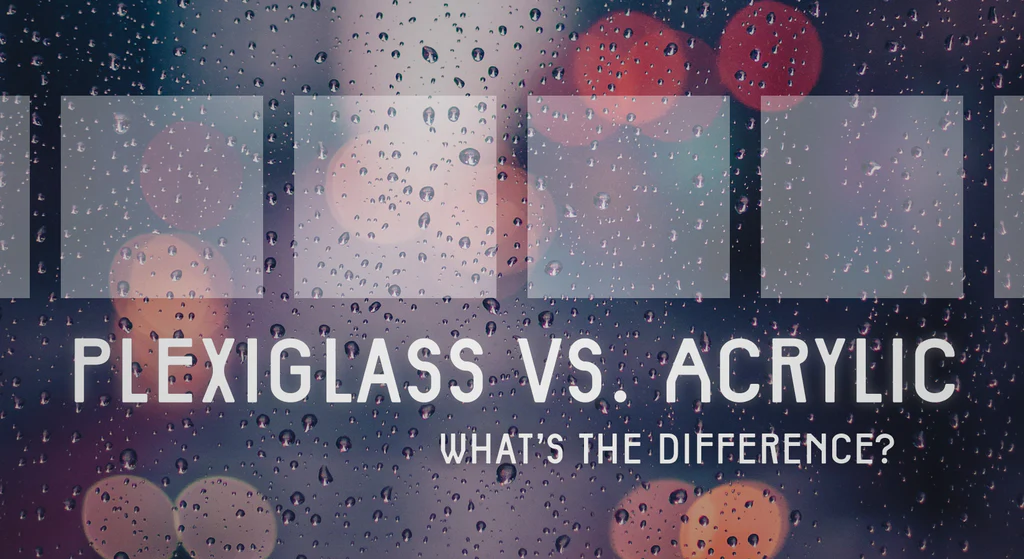
Perspex (Another Brand Name): It’s another trademarked brand name for acrylic. This term is primarily recognized in the UK and Commonwealth countries. It was introduced around the same time as Plexiglas and shares similar properties.
Therefore, you can say that Acrylic, Plexiglass, and Perspex are the same PMMA with slight variations. However, the ultimate differences lie in branding and regional preferences. You had better confirm the distinctions with the manufacturers.
Conclusion
Plexiglass sheets from polymethyl methacrylate (PMMA) combine many great features to outmatch materials like glass and polycarbonate to several extents. Selecting the right plexiglass sheet maximizes its advantages for your specific project needs. No matter the intended application, you can opt for tailored and custom solutions without compromising quality.
Get the Best Acrylics for Your Project from JUMEI
Acrylic or plexiglass – whatever you need, Jumei Acrylic Manufacturing is ready to deliver. We’ve competed for 15+ years with pioneering technology, industry experts, and innovative solutions. Contact us to drop your specifications and get professional assistance.
]]>